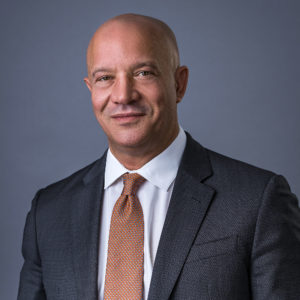Free Consultations Are Murdering Your Divorce Practice
- David Crum, Esq.
The Fallacy of Free
In my years of consulting for divorce attorneys, I’ve come across this problem time and again: practitioners giving away their time and expertise and gaining less than nothing for their efforts. The truth is, there are few things costlier to a law practice than promoting free consultations as a primary driver in its marketing plan. Of course, free consultations will get a lot of people through the door – folks who want free advice or to talk incessantly about their crumbling marriages. But they are ultimately a deadly waste of time because the great majority simply will not convert into paying clients. It’s an elegant trap that continues to ensnare divorce lawyers in every legal market in the United States.
So why do so many firms decide to offer free consultations as part of their legal services? Pressure from “perceived” competitors is one of the biggest reasons. They see some other firms doing it so they think they have to do it as well or they will lose a competitive advantage. I use the term “perceived” competitors here because if you are high level lawyer or law firm providing top notch representation, other law firms who are offering free consultations are not your competitors. Yet the misconception that free consultations are an easy way to get clients is still a common idea that is hard for some divorce firms to shake.
Real Numbers in the Real World
In my dual CEO role for US Legal Marketing Group and US Legal Marketing Group, I have looked incessantly at conversion rates for paid and unpaid consultations. So let me share some math with you. In the real world, conversion rates for paid consultations fall into a very predictable range. For non-referral, digital leads, the bottom end is around 35% with a high end of around 65%. Leads that come from referral sources are typically higher, with a bottom end closer to 50% and a higher end that often exceeds the 65% rate we saw earlier. If you’re offering free consultations, you will be doing very well if you turn 10% of those consultations into paying clients if you have a market rate retainer. If your retainers are below market you will of course convert more of these free consultations into clients, but that will create a host of other problems, including problems with your accounts receivable.
Consider the opportunity costs involved when, say, Attorney A who normally charges $300/hour does three, hour-long free consultations per week. If none convert, she’s simply lost $3,600 in billable time for that month. But let’s be generous and say she retains 16% of these clients – two out of 12 – who each pay a retainer to the firm. It has just cost the firm $3,600 to acquire two new clients or $1,800 per client. It is very important to remember that this acquisition cost is in addition to the marketing costs the firm has expended to acquire these leads in the first place. This makes the client acquisition costs for the firm completely unworkable.
Now let’s look at the same scenario using an attorney who charges the same amount as her hourly rate of $300 for consultations and assume she converts 50% of these consultations. She has now generated $3,600 in paid consultation fees for the firm and has acquired 6 new clients that month. The acquisition cost for each of those clients is now solely related to what the firm has spent in acquiring the leads, and as long as the firm is successful in acquiring leads affordably, it will have an extremely high return on marketing spend and will allow its attorneys to generate revenue at the highest levels.
Free Consults Hurt Your Recruiting Efforts
In order to stay competitive and grow your divorce practice, you will need to recruit talented attorneys. Free consultations have such a negative effect on your attorneys’ ability to generate revenue that you will be severely limited in what you can pay them and remain profitable. This will in turn hamper your ability to pay at or above market salaries when recruiting and will interfere with your ability to build a talented team. When I work with firms that offer free consultations, the first action item we implement is ending free consultations. I am not exaggerating when I say that when we implement that one policy change, these firms are able to not only recruit talented attorneys but are often able to pay these attorneys one and a half to two times their existing salaries. This simple change often allows a firm to become a dominant force in the recruiting space of their talent pools.
How to Handle Objections to Paying for a Consultation
Attorneys who work with me know that I am a realist, and as such I’m not going to pretend that switching from unpaid to paid consultations is not without its challenges. The biggest challenge and attendant solutions are training your staff to respond to objections that potential clients might have to paying for an initial consultation. The main techniques for addressing this objection fall into two categories.
The first technique is to focus on the benefits that the client will receive as part of the paid consultation. When an attorney is paid for her time in a consultation, she is free to go as deep into the case as necessary. She can take her time and explore options with the client. The client will fully understand her options and have a roadmap for what a successful resolution of her divorce will look like. On the other hand, free consultations are often limited in time and scope. Often a “free” consultation is just 30 minutes in length, barely enough time for the attorney to really understand what’s going on in the case. Sometimes, a consultation is only free for a certain period of time, then the attorney begins charging her time after that. These types of free consults are not only stressful and rushed, they sometimes cost more than consults that are set with a fixed fee up front.
The other main technique is to explain to the caller the real intention behind firms who offer free consultations. For many of these firms, the free consultation is nothing more than a lengthy sales pitch in disguise. Fortunately, everyone in the United States is familiar with, and likely has some direct experience with, the old adage that “you get what you pay for.” It is a theme that resonates easily with callers, and when you explain to them that yes, they can get a free consultation from another firm, but it will likely feel more like a sales call than a consultation, it is something they understand immediately. Clients who want to argue about a free consultation or end up not booking a consultation because they do not want to pay were never going to become your clients in the first place.
Much of American business has been built around the ideas of discounts, sales, and getting a sweet deal. But at the end of the day, you’re better off crafting a good sales and marketing formula that involves paid consultations, rather than trying to compete on price by offering something free. In my experience, when I’ve advised a firm to avoid or end their free consultation offerings, the results have always had an immediate and dramatic positive impact on the firm’s bottom line.


